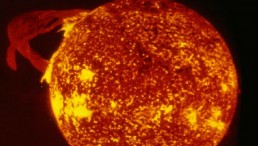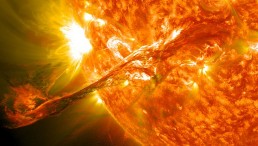galaxy
NASA Hunting Universe’s Oldest Light Using ALMA Astrological Interferometer
NASA’s Spitzer Space Telescope Spots Star Expresses Love With Giant Alien Planet
Astronomers Relates Star Explosions To Baby Supernova
NASA Weighs Ancient Galaxy Using Data From Different Telescopes
Black Hole Seen 'Burping' Gas
Earth in Grave Danger With Comet Sun Shower
Brightest Galaxy Ever Discovered Could Contain 300 Trillion Suns
Cause of Galactic Death: Strangulation
Supernovae Dust ‘Goldmine’ Found at the Center of the Milky Way
First Ever Cosmic Dust Observations Made in the Center of the Galaxy
Striking It Rich in Supernovae Dust at the Center of the Milky Way Galaxy
Is the Galaxy Bigger Than We Thought?
Could Dark Matter and Black Holes Cause the Swirl In Your Galaxy?
Cosmic Radio Burst Caught from Outside Our Galaxy
Most Popular
![China's Chang'e 6 Moon Mission Appears to Include an Undisclosed Mini Rover [See Photos]](https://1721181113.rsc.cdn77.org/data/thumbs/full/53548/89/56/50/40/chinas-change-6-moon-mission-appears-to-include-an-undisclosed-mini-rover-see-photos.jpeg)
China's Chang'e 6 Moon Mission Appears to Include an Undisclosed Mini Rover [See Photos]

NASA’s JWST Gets First-Ever Look at the Light of Ancient Stars Surrounding the Oldest Black Holes in the Universe

First Neuralink Brain Implant Patient Can Play Games, Use Apps Despite Data Capture Reduction
![Apple Is Developing Homegrown Chips to Run AI Tools in Data Centers [Report]](https://1721181113.rsc.cdn77.org/data/thumbs/full/53497/89/56/50/40/apple-is-developing-homegrown-chips-to-run-ai-tools-in-data-centers-report.jpeg)
Apple Is Developing Homegrown Chips To Run AI Tools in Data Centers [Report]





